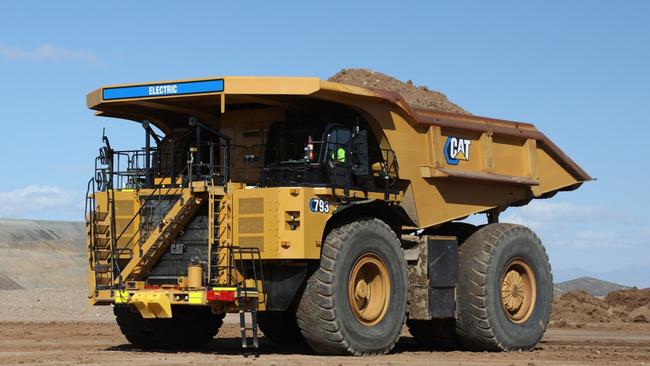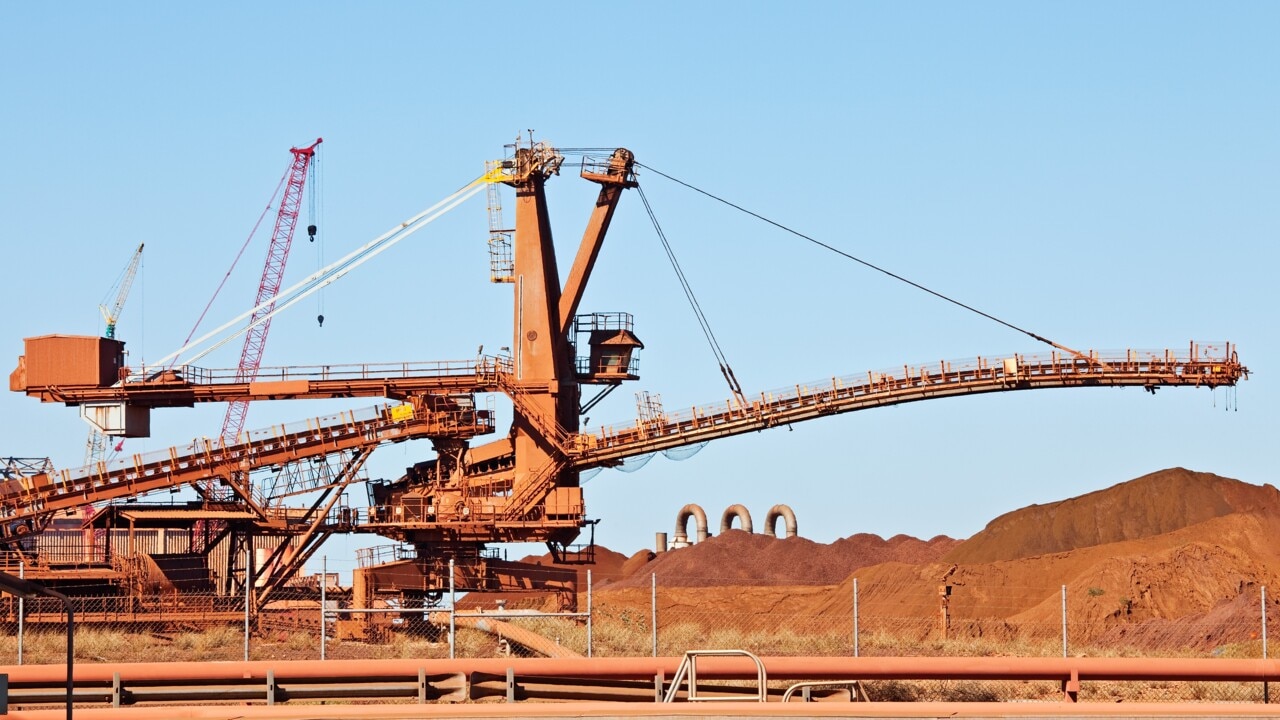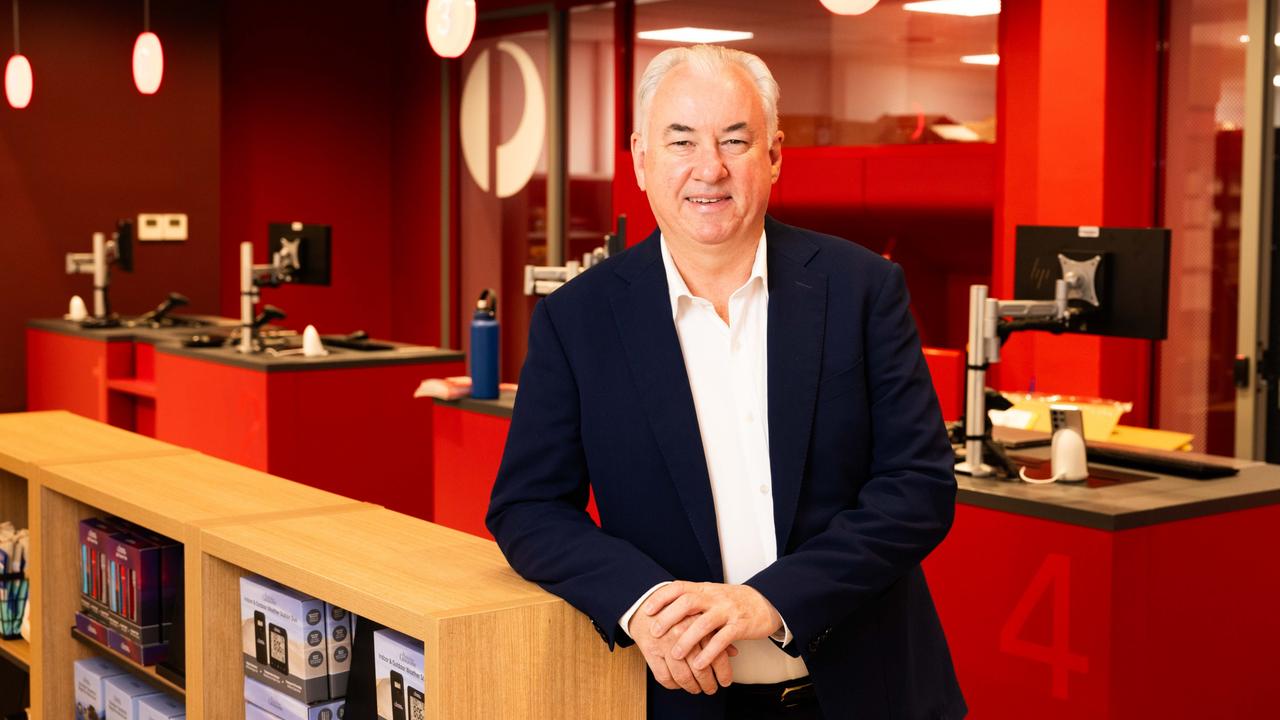BHP backs electrification for heavy lifting on its emissions reductions
BHP will source 500MW of renewables in the Pilbara by 2030 as it converts its diesel-hungry truck fleet to electric power in coming years.

Business
Don't miss out on the headlines from Business. Followed categories will be added to My News.
BHP will source 500MW of renewable power and storage in the Pilbara by 2030 and have its first all-electric truck fleet operational before the end of the decade under its plans to achieve its 30 per cent emissions reduction target.
The global miner is also working on technology advancements on the steelmaking front, and sees carbon capture and storage and a move to more electricity-powered steelmaking as providing the major abatement benefits in that sector.
BHP’s vice president climate Dr Graham Winkelman said the company would likely report “a small increase” in operational emissions this financial year, with that understood to be largely down to growth in production.
The global miner said on Wednesday it was on track to deliver “at least” a 30 per cent reduction in scope one and two greenhouse gas emissions by 2030 against a 2020 baseline, and maintained its aspirational target to be net zero by 2050.
Dr Winkelman said the company had made good progress on the power front through the use of power purchase agreements, with its Chilean copper mines Escondida and Spence already having transitioned to 100 per cent renewable energy.
Diesel is now the largest source of emissions across BHP, with Dr Winkelman saying on Wednesday the company had determined that electrifying its truck and train fleets and powering the fleets with renewable energy was the best path forward.
“If technology develops as we believe it can, we expect the first electric truck fleet adoption by FY2028, and in FY2030, the first of multiple future electric locomotive deployments,’’ Dr Winkelman said.
“Milestones after FY2030 primarily consist of greater adoption of electrification across materials movement.’’

BHP does not intend to use carbon offsets to meet its 2030 target, but Dr Winkelman said the company did anticipate needing some carbon credits to hit its 2050 net zero goal.
“We are likely to source and relinquish carbon credits in coming years to meet compliance obligations under Australia’s Safeguard Mechanism,’’ Dr Winkelman said.
“But, to be clear, we would not count those regulatory carbon credits towards achievement of our FY2030 target.’’
In the Pilbara iron ore region in northern Western Australia BHP is unable to take advantage of PPAs to buy renewable energy as the area is off the main grid.
Therefore BHP is looking at how to source renewable energy in the area, BHP vice president operation decarbonisation Dan Heal said.
“In Western Australia Iron Ore, our inland Pilbara operations are not connected to an existing grid and so we cannot purchase power through the market,’’ Mr Heal said.
“Renewable technologies such as wind and solar are available, but the Pilbara is remote, so we are working through the best way to introduce large volumes of renewable energy,
or other sources of low to zero emissions power, while keeping power running 24/7, 365 days a year.
“By the end of this decade, we plan to have up to 500MW of wind, solar and battery storage assets available in the Pilbara, backed up by firm power from our highly efficient Yarnima gas fired power station.
“We also expect significant demand growth to occur post FY2030, with diesel displacement increasing the amount of electricity required at some of our operated assets by up to four times.
“This means securing a reliable supply of renewable and other low to zero emission energy into the future remains a significant priority.’’
Mr Heal said BHP used about 1850 megalitres of diesel per year with almost half of this used in the truck fleets.
“We continue to believe that an electrified mining fleet will be more economic than hydrogen,’’ Mr Heal said.
“This is primarily driven by the overall efficiency of an electrified pathway, compared to other fuels.
“Electrification can also lead to improved maintenance performance, the elimination of diesel particulate matter, and reduction in noise and vibrations.
“We consider alternative fuels such as biofuels as a backup option if electrification is delayed or unsuccessful, and we continue to monitor developments in this area.’’
Mr Heal said in terms of performance, the electric trucks were expected to be on par or superior to an equivalent diesel truck.
“A battery electric truck will need to be charged more often than a diesel truck is currently refuelled, but we expect to be able to counter that in some places using dynamic energy transfer, such as trolley systems,’’ Mr Heal said.
“Furthermore, when receiving electricity directly through a dynamic energy transfer system, we expect a battery truck could outperform a current diesel truck uphill and, on a downhill grade, the truck captures the energy that would normally be lost to heat and returns it to the battery.’’
BHP head of decarbonisation partnerships Dr Nigel Tame said on the steelmaking front BHP was working with partners on a number of approaches relating to blast furnaces and other parts of the production chain.
“For the blast furnace route on the left hand side, we aim to demonstrate the potential for reductions in CO2 emissions intensity at scale through trials or pilots of developing technology, such as carbon capture,’’ Dr tame said.
“The steel industry regards carbon capture, utilisation and storage, or CCUS, as a critical abatement option for existing blast furnaces, and 9 out of 10 of the largest steel producers with net zero goals include CCUS in their road maps.
“For the blast furnace, we believe that emissions reduction options can be combined to achieve, and well exceed, the 30 per cent emissions intensity reduction capability of our CY2030 goal, and head towards near zero.’’
BHP is also looking at how its ores will be used in electric arc furnaces, electric smelting furnaces and the direct reduced iron (DRI) process.
“Our objective is to establish and optimise the performance of our ores in the raw material preparation and DRI steps, and we are well on the way,’’ Dr Tame said.
“For example, we are seeing growing use of our ores in pelletising in China, and we recently commenced DRI production trials with two customers also in China.’’
BHP is also aiming to complete a prefeasibility study, in collaboration with BlueScope Steel and Rio Tinto, on a pilot ESF, “and, if it’s successful and subject to approval by the partners, we aim to complete a detailed design study, and construct and commission a pilot facility as early as CY2027’’.
“Once developed, the pilot facility would allow us to investigate and resolve technical challenges, test and optimise for the performance of DRI based on Pilbara ores, and demonstrate the viability of electric smelting furnaces to our customers as they seek to invest in full scale operations,’’ Dr Tame said.
More Coverage
Originally published as BHP backs electrification for heavy lifting on its emissions reductions





